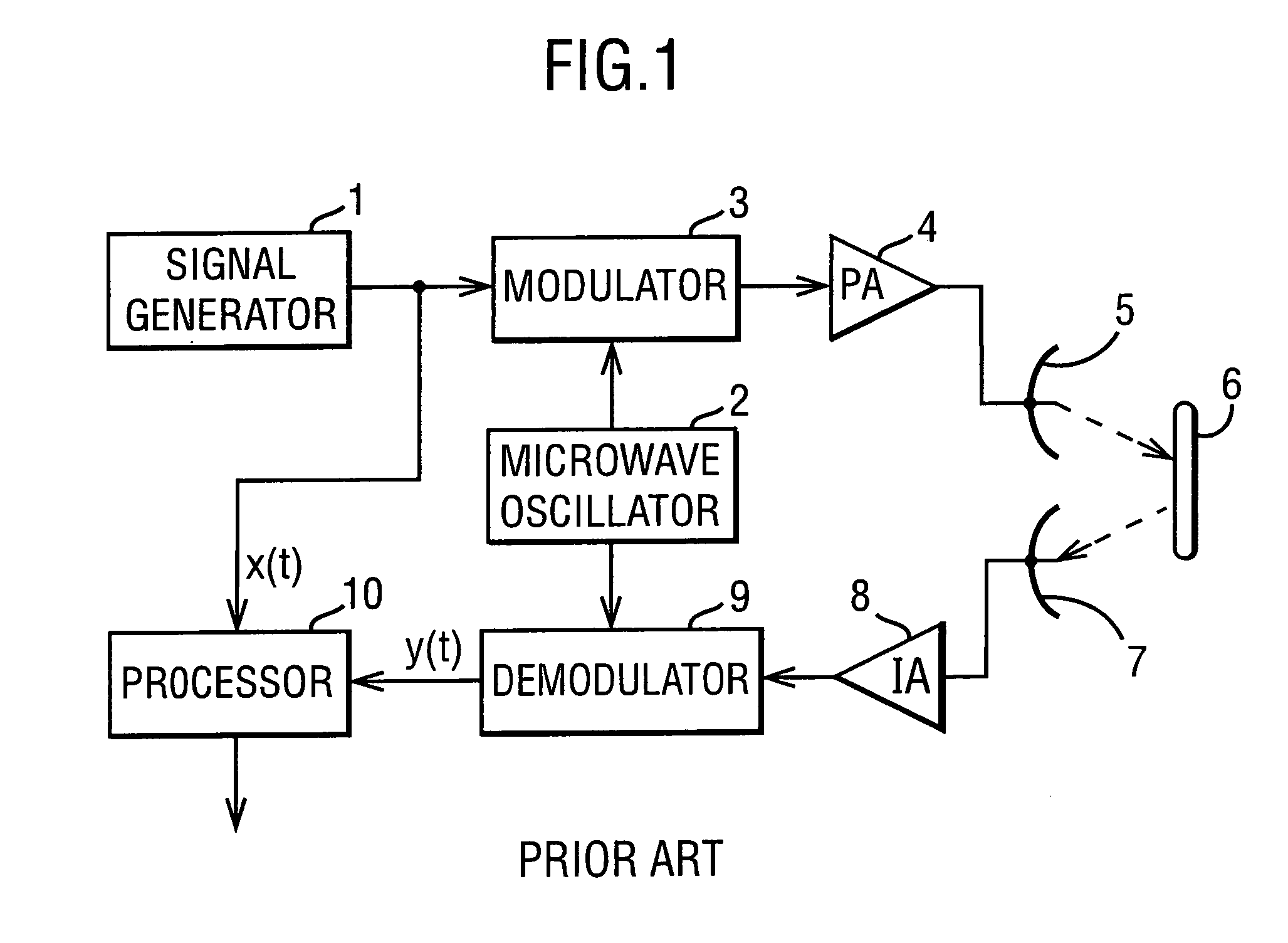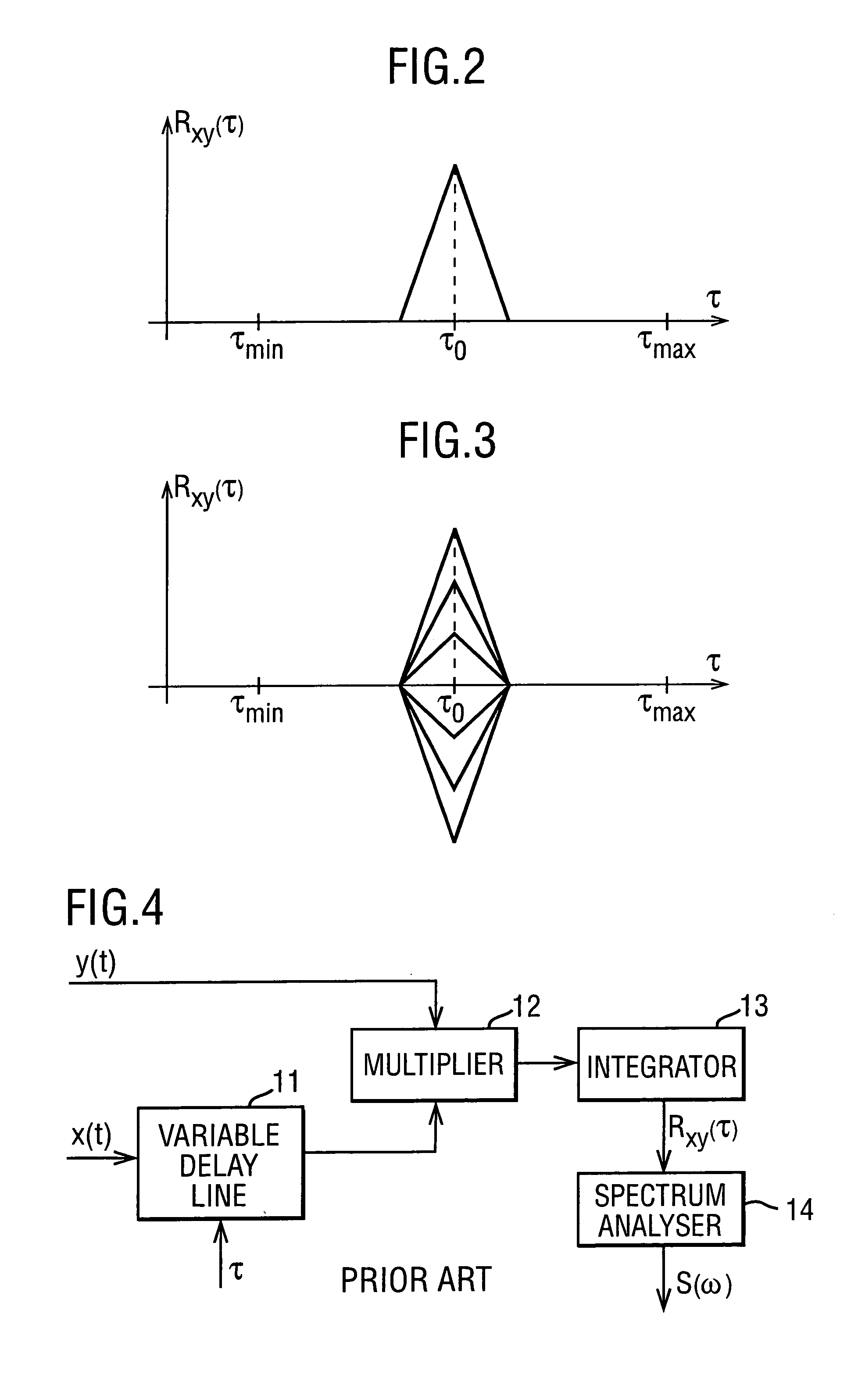Signal detection
a signal detection and signal technology, applied in the field of signal detection methods and apparatuses, can solve the problems of small changes in the range d, the order of the wavelength of the carrier frequency, and the inability to discern, so as to achieve the effect of less expensive and wide tolerances
- Summary
- Abstract
- Description
- Claims
- Application Information
AI Technical Summary
Benefits of technology
Problems solved by technology
Method used
Image
Examples
Embodiment Construction
[0068]FIG. 7 shows a representation of the time-frequency plane divided into range-Doppler resolution cells and a hypothetical obstacle occupying a single cell. Prior art arrangements are designed to establish the coordinates τ0,ωD0 of the cell.
[0069]When obstacles are to be classified into only two alternative classes: obstacles moving with specified velocities and all other obstacles, the time-frequency plane will be divided into a number of resolution cells equal to the number of required range cells. An obstacle detected in any of those resolution cells will have the range specified by that cell, but its velocity may be one of the plurality of admissible velocities, corresponding to an entire interval of Doppler frequencies ωD, say, ωDminDDmax.
[0070]FIG. 8 is a representation of the time-frequency plane divided into a number of range resolution cells for a specified interval of Doppler frequencies. An obstacle located at the range cell To may have a radial velocity within an int...
PUM
 Login to View More
Login to View More Abstract
Description
Claims
Application Information
 Login to View More
Login to View More - R&D
- Intellectual Property
- Life Sciences
- Materials
- Tech Scout
- Unparalleled Data Quality
- Higher Quality Content
- 60% Fewer Hallucinations
Browse by: Latest US Patents, China's latest patents, Technical Efficacy Thesaurus, Application Domain, Technology Topic, Popular Technical Reports.
© 2025 PatSnap. All rights reserved.Legal|Privacy policy|Modern Slavery Act Transparency Statement|Sitemap|About US| Contact US: help@patsnap.com



